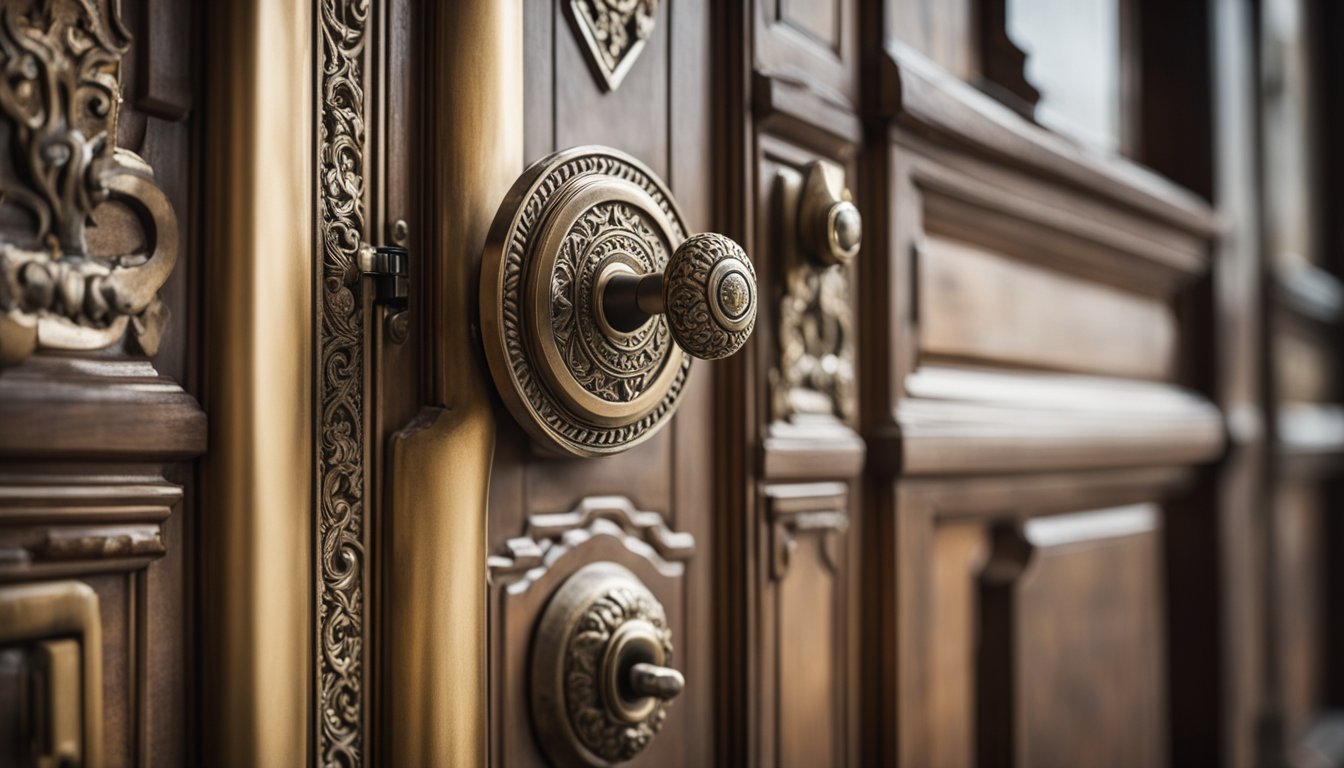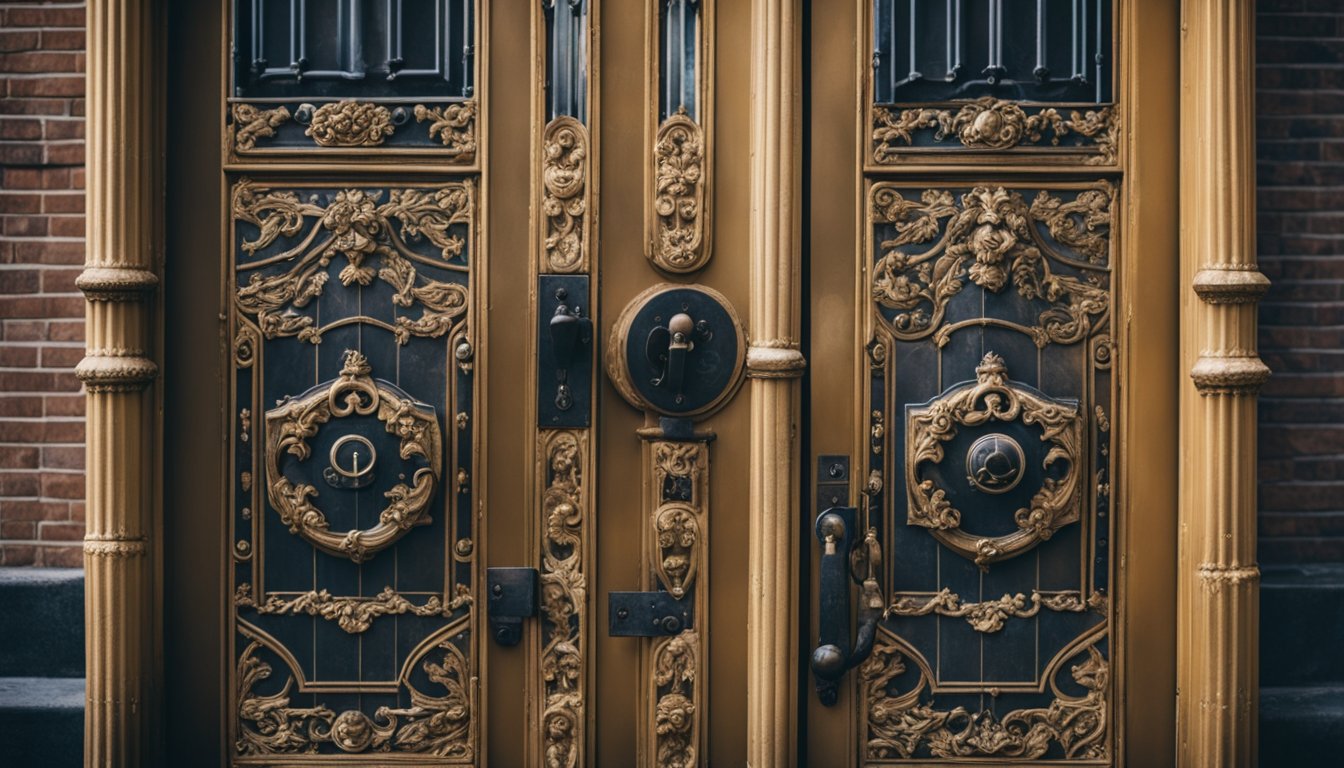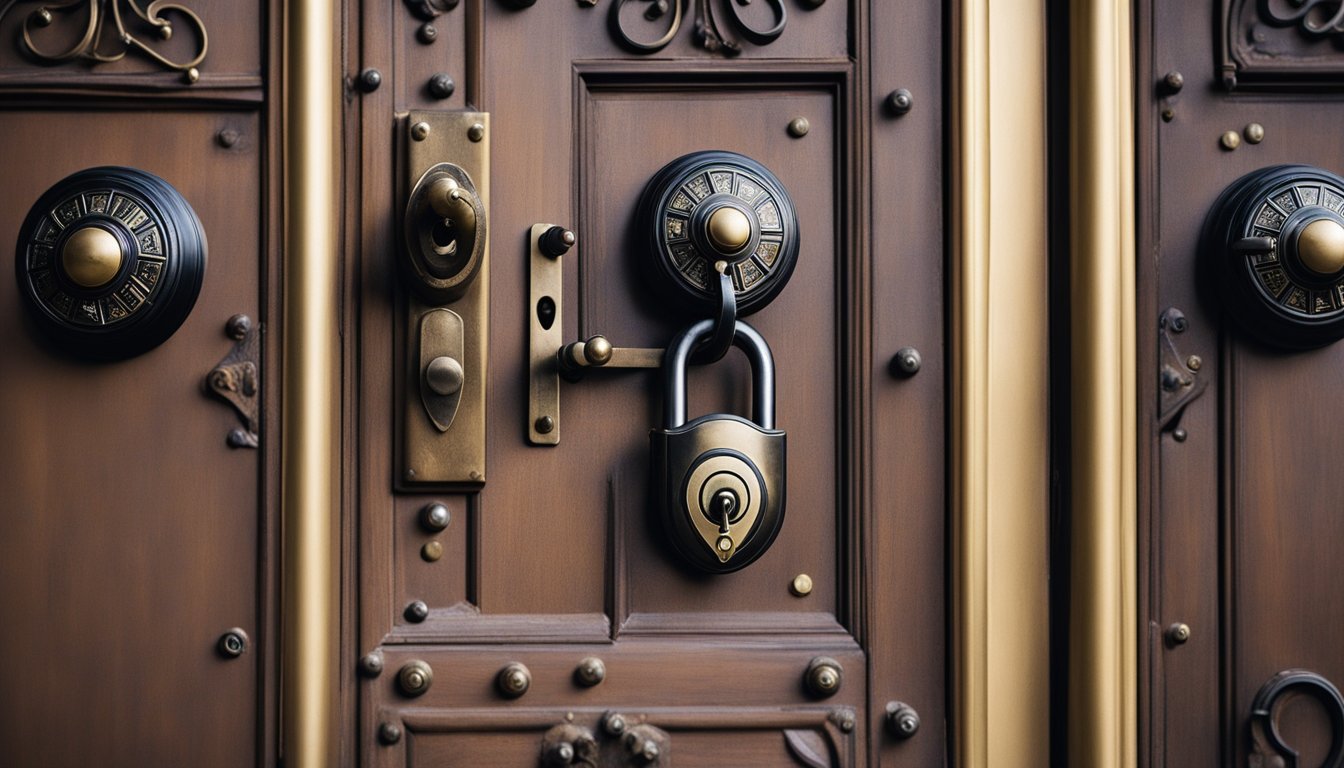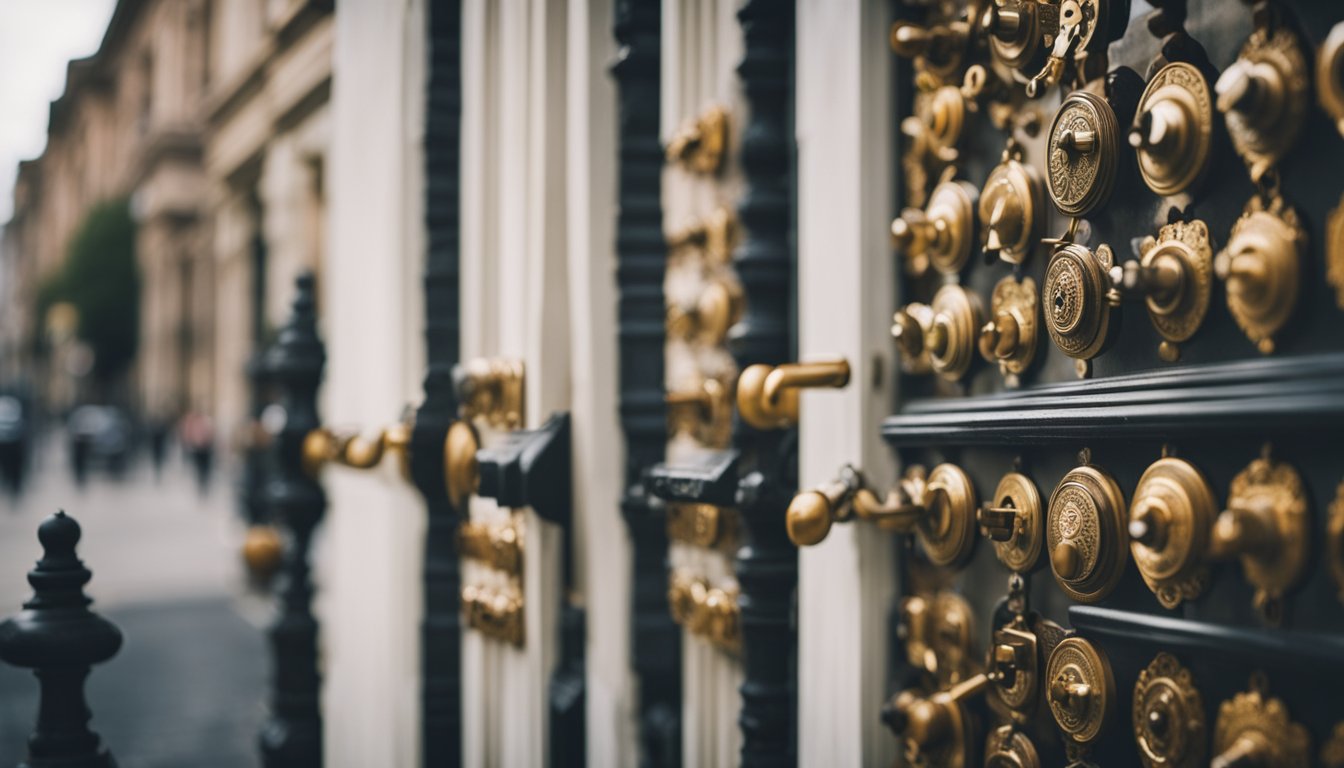Late updated: 07 Feb 2025 10:02
Written by: Elena Prescott
Choosing Quality Locks for Listed Buildings: Ensuring Security and Compliance
Choosing the right locks for listed buildings is essential to maintain their historic integrity while enhancing security. These buildings require special consideration as we navigate the delicate balance between aesthetic preservation and modern security needs. We must ensure that the locks we choose provide optimum protection and comply with regulations without compromising the building's character.

Listed buildings often face unique security challenges due to their age and traditional construction. Given their cultural significance, safeguarding these properties demands an approach that respects their heritage. Innovative solutions exist to reinforce the security of heritage properties without altering their authentic appearance, such as high-security deadbolts or even disguised digital locks.
In our quest to secure listed buildings, collaboration with experts like locksmiths ensures an informed choice of quality locks. Consulting professionals with experience in historic properties can help us assess specific needs and choose locks tailored to our building's structure. This careful selection process enhances both security and compliance, guaranteeing peace of mind for owners of these cherished structures.
Key Takeaways
- Quality locks for listed buildings balance security and historical integrity.
- Listed building security requires expert consultation and tailored solutions.
- Modern lock options enhance protection while maintaining compliance.
Evaluating Security Needs for Listed Buildings

Listed buildings require security measures that respect architectural heritage while addressing modern safety requirements. Our focus includes understanding regulations, assessing risks, and selecting security solutions that balance preservation and functionality.
Understanding Listed Building Regulations
When securing a listed building, compliance with regulations is crucial. Listed building regulations ensure that historical and architectural significance is preserved. We must navigate the complex landscape of permissions to avoid jeopardising the building's status.
Building consent is essential for major security enhancements. Even minor changes like CCTV installation or alarm systems must comply with guidelines. Each modification requires careful planning to avoid penalties or legal issues. This ensures preservation while enhancing security.
Conducting a Risk Assessment
Identifying potential threats helps in tailoring effective security solutions. Understanding the level of security required starts with evaluating risks of break-ins and unauthorised access. Perimeter protection and surveillance systems play crucial roles here.
Insurance considerations include ensuring that security measures align with policy requirements. This reduces liability and ensures adequate cover in the event of asset loss or damage. Effective risk assessment aids in selecting appropriate features like alarm and CCTV systems.
Selecting Appropriate Security Solutions
Preservation concerns dictate that any security solution blends with the building's aesthetics. We must choose solutions that allow minimal intervention and reversibility. High-quality locks and period-appropriate designs offer both security and architectural harmony.
Modern security solutions may integrate with technology for remote monitoring. Balancing functionality with performance, these systems ensure robust protection. Certification guarantees compliance with safety standards and fire regulations. By considering these factors, we create a secure yet historically respectful environment.
Locks and Security Devices for Heritage Properties

When securing heritage properties, it's essential to blend period-appropriate locks with modern security measures. Balancing functionality and integrity is paramount, ensuring aesthetic coherence while providing robust protection.
Choosing Period-Appropriate Locks
For listed buildings, it’s crucial to select locks that complement their historic character. Antique locks often require careful restoration or replacement to maintain their aesthetic appeal while ensuring security. Fortunately, high-quality replicas or restored antique locks can often meet EN 1303 or UL 437 standards, ensuring both safety and aesthetic consistency.
We find it important to consider the functionality and integrity of these period-appropriate locks. The necessity of balancing security with heritage preservation demands careful selection. Collaborating with experienced locksmiths can aid in discovering locks that seamlessly fit the architectural narrative while offering genuine protection.
Modern Security Measures for Historic Integrity
While antique locks offer charm, they may lack contemporary security features. Integrating modern security solutions, such as wireless alarm systems and surveillance, can provide substantial security. Smart locks offer another layer of protection and can be equipped without compromising the building’s historical characteristics.
To enhance listed building security, we can consider devices built for interoperability with existing systems. This allows for seamless functionality that respects the sensitive nature of heritage properties. Protection against physical attacks can be subtly implemented through hidden surveillance, ensuring that the historic appeal remains undisturbed.
Professional Installation and Maintenance
Securing heritage buildings requires professional insight for both installation and maintenance. Locksmiths with expertise in historic properties ensure that all upgrades align with the building’s unique requirements. Attention to detail in installation prevents altering the building's structural integrity while maintaining its appearance.
Regular maintenance is crucial to preserve the functionality and aesthetics of both period and modern locks. Insurance requirements often demand adherence to particular lock standards, affecting our choice. Ongoing collaboration with skilled professionals ensures the longevity and effectiveness of lock systems, providing peace of mind for listed building owners.
Frequently Asked Questions

When securing listed buildings, balancing historical integrity with advanced security measures is essential. Here, we explore the features and considerations that can guide us in choosing effective locks while preserving aesthetic value.
What features should be considered when selecting high-security locks for historic buildings?
When choosing locks for historic buildings, we must consider durability and appearance. Traditional aesthetics should blend with modern security features like tamper resistance and pick resistance. Additionally, the lock’s compatibility with the building’s materials and compliance with any legal regulations is important.
How does a mortise lock mechanism enhance door security in heritage properties?
Mortise locks offer robust security by fitting into a pocket within the door. This design greatly enhances strength against forced entry. Additionally, mortise locks are highly customisable, allowing us to maintain a building's historic look while improving security significantly.
What are the benefits of installing a UL rated lock on a listed building's entryway?
UL rated locks are tested for security and reliability. These locks ensure high performance and resistance to pick and bump techniques. By choosing locks that meet this standard, we guarantee enhanced security for listed buildings without sacrificing structural integrity.
Can heavy-duty commercial door locks be appropriately integrated into listed buildings without compromising their aesthetic?
Integrating heavy-duty locks into listed buildings is achievable with careful selection. Certain models are designed to mimic traditional styles or can be concealed to maintain the façade. Consulting with restoration experts helps us find solutions that preserve aesthetic value while upgrading security.
In what ways do Eufy Smart Locks E130 provide modern security to traditional buildings?
Eufy Smart Locks E130 offer keyless entry and remote access, perfect for modernising security discreetly. Their design is sleek and unobtrusive, making them suitable for listed buildings. These locks can be operated through apps, allowing us to manage access efficiently and securely.
Which factors determine the best grade of door lock for ensuring the safety of a listed building?
The best lock grade depends on the level of security needed. We evaluate potential threats, building access points, and usage frequency. Lock grades range from standard residential to high-security commercial options, helping us determine the right fit based on specific building requirements.
